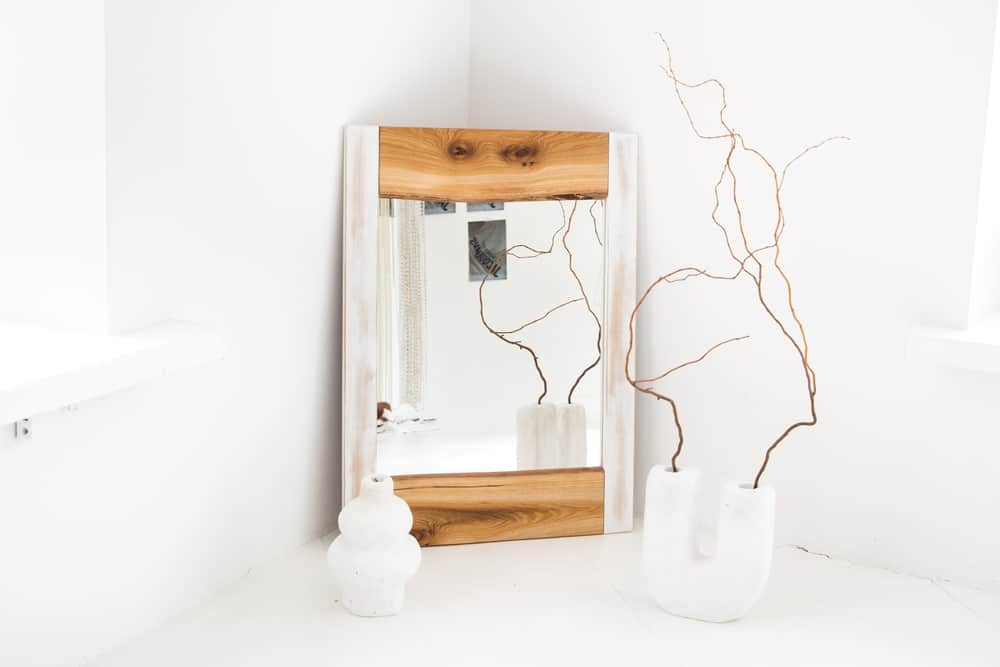Mirrors in all shapes and sizes are the “IT THING” in the world of interior design. Depending on the overall look you try to achieve in your household, you can choose if your mirror will be framed or not; will it be modern or antique; on the wall or floor; round or rectangular?
The choices are many.
However, for all of you who prefer the vintage and boho style over the modern and minimalistic one, this article will be a treat. In this post, my focus is placed on an antique floor mirror. After reading it, you’ll know where to find them, how much they are worth, and how to use them to upgrade your interior aesthetics.
Table of Contents
The Brief History Of Mirrors
Nowadays it is completely normal for you to see your own reflection almost anywhere you go. But some 500 years ago this was not so common at all. Moreover, most people in that time never saw their reflection in the mirror. The reason was, of course, the price.
Five centuries ago glass mirrors were so expensive that only the wealthiest people could afford them. The glass-making process was a secret, so in cases when a glassmaker wanted to escape or share his knowledge he would be punished or even assassinated.
By the early 1600s, the secret was brought to England by the French glassmakers and from that moment good quality mirrors were available to the middle class. Mostly mirrors were used to reflect the candlelight through the room.
These mirrors were made from glass that was backed with a thin metal sheet of amalgam that was responsible for reflection, this is why these mirrors weren’t so accurate. However, in 1835 a German chemist came up with the chemical process where he used metallic silver to coat glass to enhance the reflection and reduce the price.
Different Types Of Floor Mirrors
Antique floor mirrors are also called dressing mirrors. This type of mirror was available for purchase for the first time in the early 1700s, soon after a new and easier crafting process allowed glassmakers to craft large mirrors.
These first full-length mirrors were made to be freestanding. Usually, they were made from silver or silver-gilt. With time glassmakers started producing different types of dressing mirrors.
Traditional dressing mirror
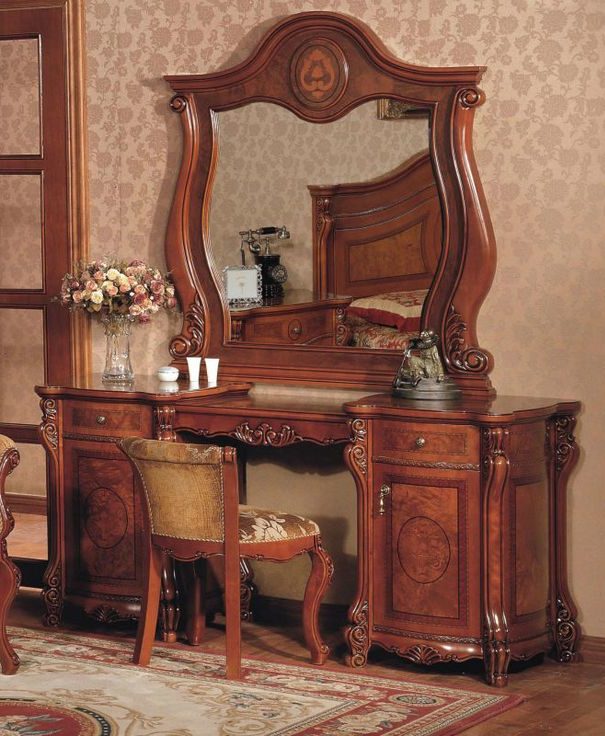
Traditional dressing mirrors allowed owners to see themselves from head to toe. These were usually freestanding mirrors but some owners preferred mounting them on the wall.
The frame was massive and usually made from silver or silver-gilt and decorated with ornamentation and floral designs. However, materials like ebony, ivory, wood (walnut, mahogany), and tortoiseshell were used as well, but these mirrors were very expensive and reserved for the upper class.
Today you can mount these mirrors vertically, as well as horizontally to create an illusion of wider space in a narrow passage, in your living room, for instance.
Leaning dressing mirror
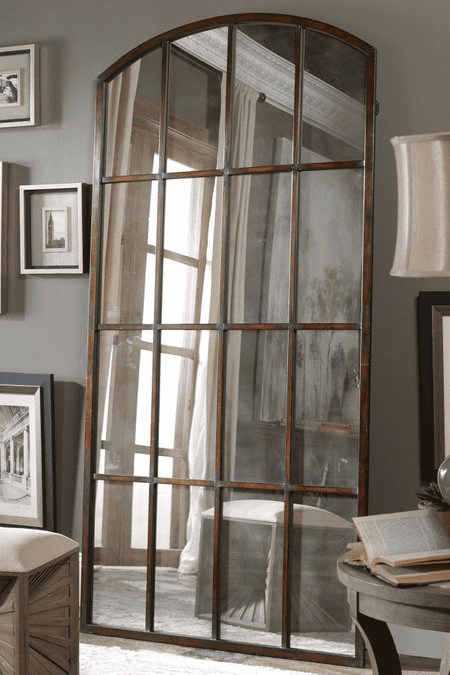
This type of floor mirror wasn’t so common back in the day. As the name says, these mirrors are leaning against the wall with the top part, while the bottom is placed on the floor.
These were mainly made for decorative purposes to make the space look wider and reflect the natural light and enhance the brightness. Leaning mirrors were placed in thin and elegant frames made from silver or copper.
Trumeau mirror
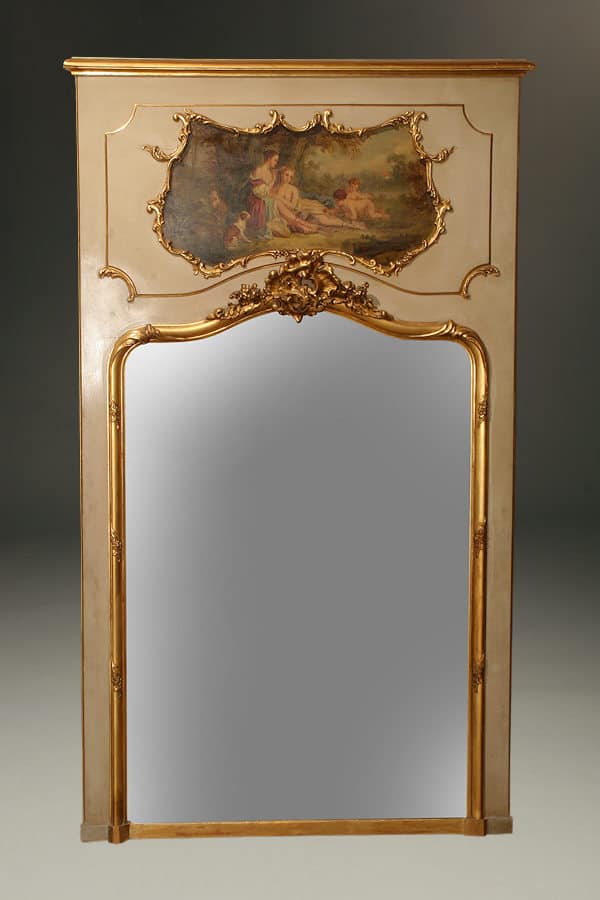
Trumeau mirror is a popular French type of rectangular floor mirror made in18th century. These mirrors were placed in a thin space of wood between window or door frames. But soon, people start using them as wall mirrors, considering they resembled art pieces.
The reason was that most of these mirrors had beautifully gilded or painted pictures on the top and bottom parts of the frame. Some even had delicately carved motifs like flowers, ribbons, scrolls, garlands, fruits, and so on.
Nowadays, this type of large mirror is very rare and valuable. In case you are a lucky owner of one, you can simply place the mirror in some corner to elevate your interior.
Cheval dressing mirror
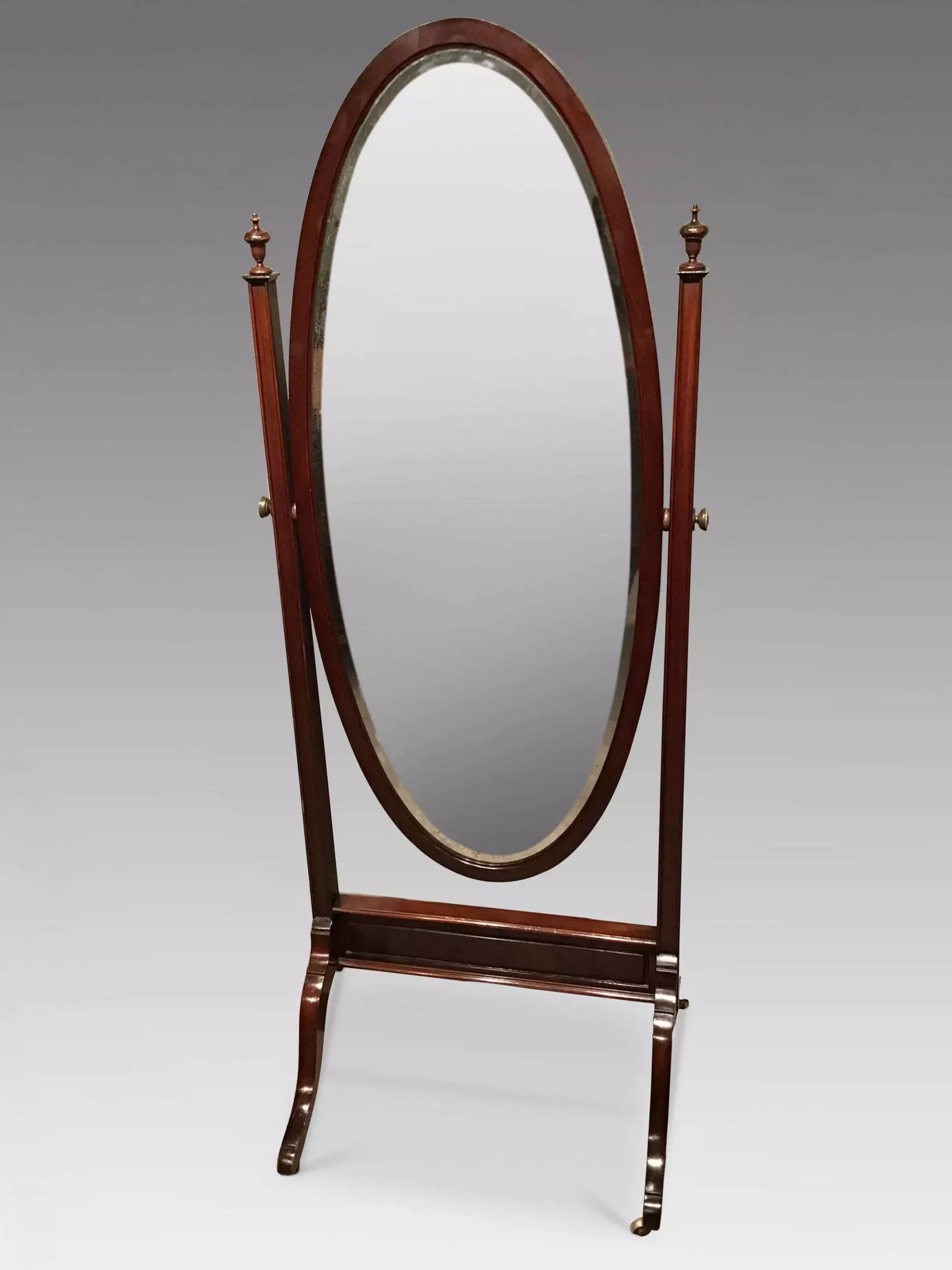
This is also a French type of floor mirror made in Paris in the mid-1800s. What is characteristic of the cheval mirrors is that they were oval, rarely rectangular, and placed in construction supported with four small legs. Mostly they used solid wood frames and construction.
Cheval in French means “horse” so you see why this type of mirror was called that.
Also, the cheval floor mirrors have a dual-pinned suspension built-in frame so you can tilt it and adjust the angle to fit your needs. Antique cheval floor mirrors are available in various different styles which include:
- Art Deco
- Napoleon III
- Queen Anne
- Victorian
- Biedermeier
- Gothic
- English Regency Empire
- Italian Empire
- French Second Empire
Today you can find cheval-style floor mirrors in most antique shops. They are a perfect addition to walk-in closets since they are easily adjustable. No matter your height, you can be sure you’ll be able to see your full figure.
What is An Antique Floor Mirror Worth?
I bet that most of you already have some idea of how pricey these antique items can be, considering the prices of new-age floor mirrors. The larger the size, the shockingly higher the prices are.
You should be prepared to pay at least around $1,500 for some simple antique floor mirror that was made in the 19th century and remained in a good condition. However, if your eyes are picking out some older versions, that cost might hurt you. The gilded and carved antique mirrors from the 18th century can cost from $5,000 to $15,000!
If you want to purchase a vintage floor mirror please be careful to not get scammed. Not all antique-looking mirrors are actually valuable, some are just very old and do not have any collector value.
How to identify an antique floor mirror?
Appearance
The majority of antique mirrors are made of glass that is coated with silver, gold, copper, or chrome. On the other hand, mirrors made in Venice have commonly been crafted from tin and mercury which tends to develop a crystalline appearance as it ages, which is a great indicator.
Bubbles
Remember that seeing bubbles in mirrors often indicates that the mirror in front of you is antique. Also, other imperfections such as waviness, unequal thickness, and oxidization can help you recognize vintage mirrors.
Oxidization
Since old-age mirrors were backed with a very thin sheet of reflective metal they must reach some level of oxidization with time, due to the accumulation of moisture. Usually, the signs of oxidation will show on the bottom of the mirror.
Where To Buy Antique Floor Mirrors?
If you are in search of an antique floor mirror I recommend you to start your search in a local antique shop, flea markets, and thrift shops. You would be surprised to know how many antique items you can find there.
Also, these stores are very reliable, since employees who work there are professionals who can help you choose the right kind of item and share some useful maintaining advice. In case they do not have what you are looking for, they will tell you where to look next.
Internet is an excellent place where you can find so many different kinds of antique furniture, fabrics, appliances and so much more.
Be aware that when you shop on the internet you can be scammed since you will buy products based solely on the pictures that the seller provides. I’m telling you this because antique mirrors are very expensive, and any reputable seller will actually tell you to come and see them in person!
Some web pages where you should look for antique mirrors are:
- 1stdibs – The first place where you should look for an antique mirror is the web called 1stdibs. This web page contains an extensive collection of antiques separated category by category so your search will be transparent and easy.
- Chairish – This is an online marketplace that contains a lot of vintages and used furniture, arts, and decor. It is very easy to use and it functions by the auction principle, where you place your bid.
- eBay – This is by far the most reputable and popular auction site. eBay is crowded with antiques, but please make sure you pay a lot of attention when making a purchase. Read the reviews first to make sure that you’re selling is offering a real deal and not replicas.
- Etsy – Etsy is similar to eBay. It provides a comprehensive collection of antiques and I’m sure you can find anything you desire right there. The same warning goes for Etsy, check out your seller before making a purchase, especially when you are buying expensive vintage furniture like mirrors.
Conclusion
A vintage floor mirror is a statement piece that will for sure add a touch of glamour and elegance to your home. So if you have some extra money to spend make sure you purchase one! Browse the internet to get some great ideas, in case you already don’t have one.
If you don’t have a lot of space you can still decorate your room with a full-length mirror, in fact, it will open up your space and make it look larger than it is. We are always open to some creative ideas and interesting stories, so if you have one for us, make sure you leave a reply below.
